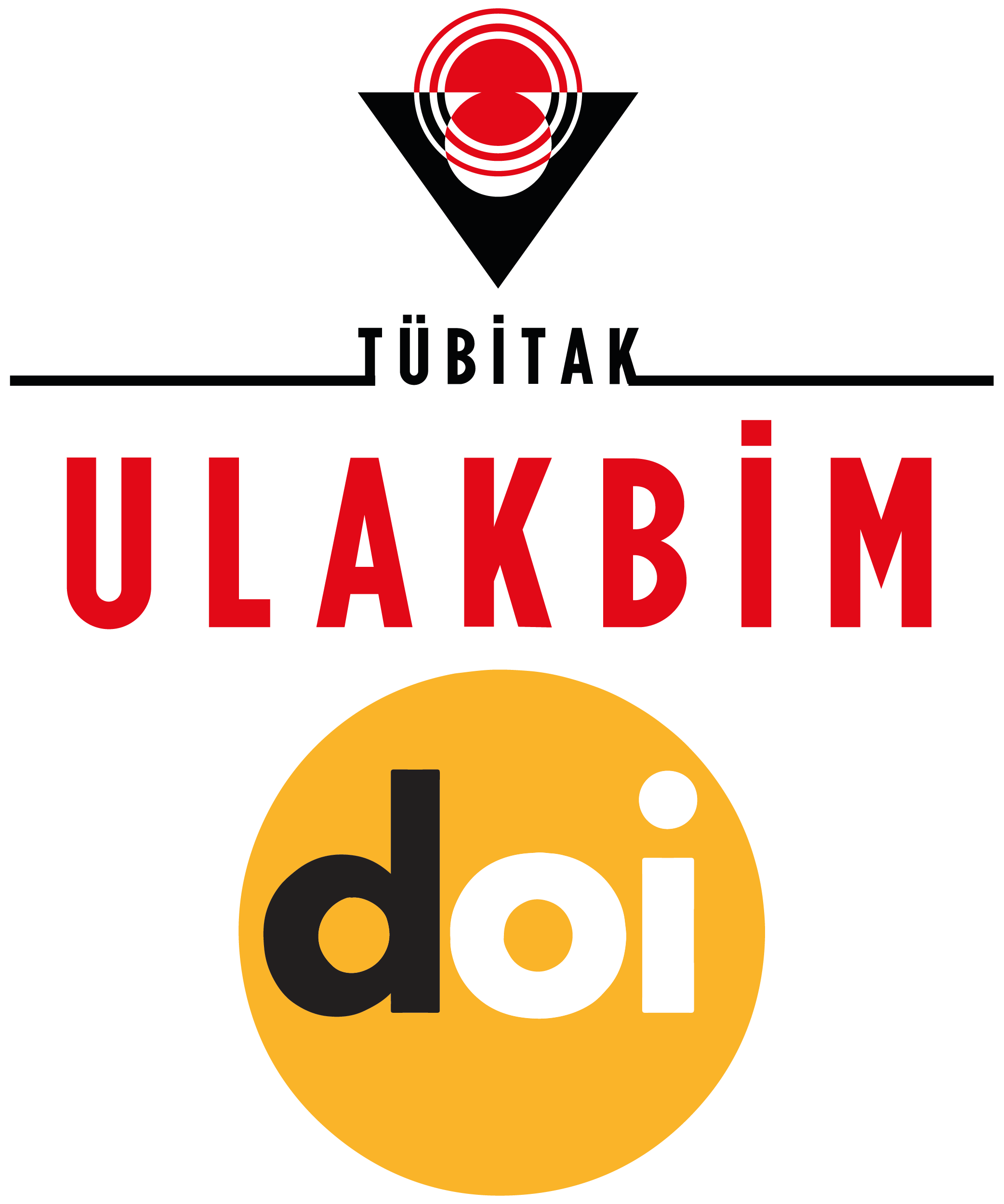Üniversite Öğrencisi Tüketicilerin Covid 19 Pandemisi Sürecinde Mobil Yemek Siparişi Uygulamalarına Yönelik Görüşlerine Güvenin Etkisini Belirlemeye Yönelik Bir Çalışma (The Effect of Trust on University Student Consumers’ Views Towards Mobile Food Ordering Applications in Covid-19 Pandemic Process)
DOI:
https://doi.org/10.21325/jotags.2021.915Keywords:
Restaurant, Mobile applications, Food ordering applications, Structural equation modelAbstract
Mobile food ordering applications have been rapidly adopted, and their use has become widespread. The measures taken within the scope of the Covid-19 pandemic also trigger this improvement. Restaurants or service providers that take food orders strive to direct the food order preferences of the consumers to themselves with the mobile applications that they offer to consumers during the Covid-19 pandemic. Especially young consumers of university students, who have been significantly affected by the pandemic measures, have become an important market for these applications. In this study, the effect of trust on the views of university student consumers towards food ordering applications is investigated within the scope of a model. Structural equation modeling is used to test the model that is developed within the scope of the aims of the study. The data of the study have been collected from 376 students studying at Malatya Turgut Özal University and Erzincan Binali Yıldırım University. The results of the study reveal that trust has a significant effect on the views of university student consumers towards food ordering applications. It is expected that the results of the study contribute to the enrichment of the theoretical knowledge and to the professionals of the industry regarding food ordering applications, the use of which has increased during the Covid-19 pandemic.
References
Açıkgül, K., & Şad, S. N. (2021). High school students’ acceptance and use of mobile technology in learning mathematics. Educ Inf Technol (2021), Vol. ahead-of-print No. ahead-of-print.
Adams, K. S., & Christenson, S. L. (2000). Trust and the family–school relationship examination of parent–teacher differences in elementary and secondary grades. Journal of School Psychology, 38(5), 477-497.
Alalwan, A. A. (2020). Mobile food ordering apps: An empirical study of the factors affecting customer e-satisfaction and continued intention to reuse. International Journal of Information Management, 50, 28-44.
Aluri, A., & Tucker, E. (2015). Social influence and technology acceptance: The use of personal social media as a career enhancement tool among college students. Journal of Hospitality & Tourism Education, 27:2, 48-59.
Amin, M. A., Arefin, M.S., Sultana, N., Islam, M.R., Jahan, I., & Akhtar, A. (2020). Evaluating the customers' dining attitudes, e-satisfaction and continuance intention toward mobile food ordering apps (MFOAs): Evidence from Bangladesh. European Journal of Management and Business Economics, Vol. ahead-of-print No. ahead-of-print.
Anadolu Ajansı (2020), Yeni tip koronavirüs salgınının 100 günü, Alındığı uzantı: https://www.aa.com.tr/tr/dunya/yeni-tip-koronavirus-salgininin-100-gunu-/1798181, E.T. 05.04.2021.
Arı, E., & Yılmaz, V. (2015). Üniversite öğrencilerinin çevrimiçi yemek siparişi davranışlarının teknoloji kabul modeliyle araştırılması. Uluslararası Alanya İşletme Fakültesi Dergisi, 7(2), 65-84.
Armağan, E., & Eskici, Y. (2019). Tüketicilerin çevrimiçi yemek servislerine karşı tutum, davranış ve satın alma niyetleri. Ekev Akademi Dergisi, ICOAEF Özel Sayısı, 39-75.
BKM (2021). Raporlar ve yayınlar, Alındığı uzantı: https://bkm.com.tr/secilen-sektore-gore-aylik-gelisim/?filter_group=10&List=Listele E.T. 04 April 2021.
Brown, S. A., & Venkatesh, V. (2005). Model of adoption of technology in households: A baseline model test and extension incorporating household life cycle. MIS Quarterly, 29(3), 399-426.
Bryne, M. B. (2010). Structural equation modeling with AMOS (Second Edition). USA: Lawrence Erbaum Associates Publisher.
Byrne, B. M. (2016), Structural equation modeling with AMOS (Third Edition). USA: Routledge.
BTK (2020). Türkiye Elektronik Haberleşme Sektörü / Üç Aylık Pazar Verılerı Raporu, Alındığı uzantı: https://www.btk.gov.tr/uploads/pages/pazar-verileri/ceyrek-raporu-2020-4-ceyrek-26-03-21-kurum-disi.pdf E.T. 04 April 2021.
Büyüköztürk, Ş. (2002). Faktör analizi: Temel kavramlar ve ölçek geliştirmede kullanımı. Kuram ve Uygulamada Eğitim Yönetimi, 32(32), 470-483.
Can, A. (2018). SPSS ile bilimsel araştırma sürecinde nicel veri analizi. 6. Baskı, Ankara: Pegem Akademi
Chi, T. (2018). Mobile commerce website success: Antecedents of consumer satisfaction and purchase ıntention. Journal of Internet Commerce, 17 (3), 189-215.
Child, D. (2006). The essentials of factor analysis. Third Ed., UK: Continuum.
Chin, A. G., Harris, M. A., & Brookshire, R. (2018). A bidirectional perspective of trust and risk in determining factors that influence mobile app installation. International Journal of Information Management, 39, 49-59.
Choi, H., Choi, Y.-J., & Kim, K-M. (2011). The Understanding of Building Trust Model on Smartphone Application: Focusing on Users’ Motivation, K. J. Kim and S. J. Ahn (Eds.), Proceedings of the International Conference on IT Convergence and Security 2011, Lecture Notes in Electrical Engineering 120, 13-20.
Cofta, P. (2006). Convergence and trust in eCommerce. BT Technol J., 24, 214-218.
Dang, T., Yan, Z., Tong, F., Zhang, W., & Zhang, P. (2014). Implementation of a trust-behavior based reputation system for mobile applications. 2014 Ninth International Conference on Broadband and Wireless Computing, Communication and Applications, 221-228.
Das, S., & Ghose, D. (2019). Influence of çevrimiçi food delivery apps on the operations of the restaurant business. Internatıonal Journal Of Scıentıfıc & Technology Research, 8(12), 1372-1377.
Davis, F. D. (1989). Perceived usefulness, perceived ease of use, and user acceptance of information technology. MIS Quarterly, 13(3), 319–340.
Davis, F. D., Bagozzi, R. P., & Warshaw, P. R. (1989). User acceptance of computer technology: A comparison of two theoretical models. Management Science, 35(8), 982-1003.
Deloitte (2020). COVID-19 etkisinde restoran sektörünün bugünü ve geleceği, Alındığı uzantı: https://www2.deloitte.com/tr/tr/pages/consumer-business/articles/COVID-19-etkisinde-restoran-sektorunun-bugunu-ve-gelecegi.html E.T. 22 Nisan 2021.
Doğan, N., & Başokçu, T. O. (2010). İstatistik tutum ölçeği için uygulanan faktör analizi ve aşamalı kümeleme analizi sonuçlarının karşılaştırılması. Eğitimde ve Psikolojide Ölçme ve Değerlendirme Dergisi, 1(2), 65-71.
Doub, A. E., Levin, A., Heath, C. E., & LeVangie, K. (2015). Mobile app-etite: Consumer attitudes towards and use of mobile technology in the context of eating behaviour. J Direct Data Digit Mark Pract, 17, 114–129.
EBYU (2021). Erzincan Binali Yıldırım Üniversitesi, https://ebyu.edu.tr/, E.T. 07.08.2021.
Ejdys, J. (2018). Building technology trust in ICT application at a university. International Journal of Emerging Markets, 13 (5), 980-997.
Foon, Y. S., & Yin-Fah, B. C. (2011). Internet banking adoption in Kuala Lumpur: An application of UTAUT model. International Journal of Business and Management, 6(4): 161-167.
Fornell, C., & Larcker, D. F. (1981). Evaluating structural equation models with unobservable variables and measurument error. Journal of Marketing Research, 18 (1), 39-50.
Grayson, K., Johnson, D., & Chen, D.-F. R. (2008). Is firm trust essential in a trusted environment? How trust in the business context influences customers. Journal of Marketing Research, 45, 241-256.
Gruzd, A., Staves, K., & Wilk, A. (2012). Connected scholars: Examining the role of social media in research practices of faculty using the UTAUT model. Computers in Human Behavior, 28, 2340-2350.
Hillman, S., & Neustaedter, C. (2017). Trust and mobile commerce in North America. Computers in Human Behavior, 70, 10-21.
Hu, L., T., & Bentler, P. M. (1999). Cutoff criteria for fit indexes in covariance structure analysis: Conventional criteria versus new alternatives. Structural Equation Modeling: A Multidisciplinary Journal, 6:1, 1-55.
Islam, R., Islam, R., & Mazumder, T. A. (2010). Mobile application and its global impact. International Journal of Engineering & Technology (IJEST), 10(6), 72-78.
Izzati, B. M. (2020). Analysis of customer behavior in mobile food ordering application using UTAUT model (case study: GoFood application). International Journal of Innovation in Enterprise System, 4(01), 23-34.
İnce, F., & Evcil, F. Y. (2020). Covid-19’un Türkiye’deki ilk üç haftası. Sdü Sağlık Bilimleri Enstitüsü Dergisi, 11(2), 236-241.
Janson, A. Hoffmann, A. Hoffmann, H., & Leimeister, J. M. (2013). How customers trust mobile marketing applications. In: International Conference of Information Systems (ICIS), Milano, Italy.
Kapoor, A. P., & Vij, M. (2018). Technology at the dinner table: Ordering food çevrimiçi through mobile apps. Journal of Retailing and Consumer Services, 43, 342-351.
Kaur, P., Dhir, A., Talwar, S., & Ghuman, K. (2021). The value proposition of food delivery apps from the perspective of theory of consumption value. International Journal of Contemporary Hospitality Management, Vol. ahead-of-print No. ahead-of-print.
Kılıç, S. (2016). Cronbach's alpha reliability coefficient. Psychiatry and Behavioral Sciences, 6 (1), 47-48.
Kılıçalp, M., & Özdoğan, O. N. (2019). Paket yemek siparişlerinde çevrimiçi aracı kullanan tüketici davranışlarının genişletilmiş teknoloji kabul modeliyle araştırılması. International Journal of Contemporary Tourism Research, 3(2), 148-163.
Kline, R. B. (2015). Principles and practice of structural equation modeling. USA: Guilford Publications.
Kuss, D. (2017). Mobile technology and social media: The “extensions of man” in the 21st century. Human Development, 60 (4), 141-143.
Li, Y.-M., & Yeh, Y.-S. (2010). Increasing trust in mobile commerce through design aesthetics. Computers in Human Behavior, 26, 673-684.
Liu, D., & Li, M. (2019). Exploring new factors affecting purchase intention of mobile commerce: Trust and social benefit as mediators,.Int. J. Mobile Communications, 17 (1), 108-125.
Marangunić, N., & Granić, A. (2015). Technology acceptance model: A literature review from 1986 to 2013. Univ Access Inf Soc, 14, 81-95.
Marriott, H. R., & Williams, M. D. (2018). Exploring consumers perceived risk and trust for mobile shopping: A theoretical framework and empirical study. Journal of Retailing and Consumer Services, 42, 133-146.
North, D., Johnston, K., & Ophoff, J. (2014). The use of mobile phones by South African university students. Issues in Informing Science and Information Technology, 11, 115-138.
Ozturk, A. B., Nusair, K., Okumus, F., & Hua, N. (2016). The role of utilitarian and hedonic values on users’ continued usage intention in a mobile hotel booking environment. International Journal of Hospitality Management, 57, 106-115.
Özal (2021). Malatya Turgut Özal Üniversitesi Kurumsal İstatistikler, Alındığı uzantı: https://obs.ozal.edu.tr/oibs/public_stats/index.aspx, E.T. 07.08.2021.
Özen, E. (2019). The concept of trust in socio-economic life. European Journal of Marketing and Economics, 2 (2), 69-74.
Palau-Saumell, R., Forgas-Coll, S., Sánchez-García, J., & Robres, E. (2019). User acceptance of mobile apps for restaurants: An expanded and extended UTAUT-2. Sustainability, 11, 1210.
Pettit, P. (1995). The Cunning of Trust. Philosophy and Public Affairs, 24(3), 202-225.
Pinchot, J., Paullet, K., & Rota, D. (2011). How mobile technology is changing our culture, Journal of Information Systems Applied Research, 4 (1), 39-48.
Prabhu, A., & Dongre, R. (2018). Analysis of customer attitude towards electronic food ordering. KIMI Hospitality Research Journal, 3(1), 1-6.
Pratama, A. R. (2018). Investigating daily mobile device use among university students in Indonesia. IOP Conf. Ser.: Mater. Sci. Eng., 325, 012004.
Rahimnia, F., & Hassanzadeh, J. F. (2013). The impact of website content dimension and e-trust on e-marketing effectiveness: The case of Iranian commercial saffron corporations. Information & Management, 50(5), 240-247.
Ratten, V. (2020). Coronavirus (Covid-19) and the entrepreneurship education community. Journal of Enterprising Communities: People and Places in the Global Economy, 14(5),753-764.
Rousseau, D. M., Sitkin, S. B., Burt, R. S., & Camerer, C. (1998). Introduction to special topic forum: Not so different after all: A cross-discipline view of trust. The Academy of Management Review, 23 (3), 393-404.
Shipman, Z. D. (2019). Understanding çevrimiçi food ordering: How the process results in satisfaction of the customers. Beykoz Akademi Dergisi, 7(2), 81-90.
Sirdeshmukh, D., Singh, J., & Sabol, B. (2002). Consumer trust, value, and loyalty in relational exchanges. Journal of Marketing, 66, 15-37.
Song, Y.-E., Jeon, S.-H., & Jeon, M.-S. (2017). The effect of mobile food delivery application usage factors on customer satisfaction and intention to reuse. Culinary Science & Hospitality Research. 23(1), 37-47.
Statista (2021). Çevrimiçi Food Delivery, Alındığı uzantı: https://www.statista.com/outlook/dmo/eservices/çevrimiçi-food-delivery/worldwide E.T. 22 Nisan 2021.
Sztompka, P. (2006). New perspectives on trust. American Journal of Sociology, 112(3), 905-919.
Tan, A., Çolakoğlu, E., & Öztosun, E. (2016). The relation between consumer and brand personality: Example of yemeksepeti.com. International Journal of Academic Research in Business and Social Sciences, 6(12), 1-15.
Tarhini, A., Alalwan, A. A., Shammout, A. B., & Al-Badi, A. (2019). An analysis of the factors affecting mobile commerce adoption in developing countries towards an integrated model. Review of International Business and Strategy, 29 (3), 157-179.
T.C. Sağlık Bakanlığı (2020). COVID-19 Bilgilendirme Platformu, Alındığı uzantı: https://covid19.saglik.gov.tr/TR-66300/covid-19-nedir-.html E.T. 18 Nisan 2021.
Tomaş, M. (2014). Paket servis müşterilerinin sipariş vermede e-aracı kullanma nedenleri üzerine keşifsel bir araştırma: yemeksepeti.com örneği, İnternet Uygulamaları ve Yönetimi Dergisi, 5 (2), 29-41.
TÜİK (2020). Adrese dayalı nüfus kayıt sistemi sonuçları, 2020, Alındığı uzantı: https://data.tuik.gov.tr/Bulten/Index?p=Adrese-Dayali-Nufus-Kayit-Sistemi-Sonuclari-2020-37210 E.T. 04 Nisan 2021.
TÜİK (2020). Hanehalkı bilişim teknolojileri (BT) kullanım araştırması, 2020, Alındığı uzantı: https://data.tuik.gov.tr/Bulten/Index?p=Hanehalki-Bilisim-Teknolojileri-(BT)-Kullanim-Arastirmasi-2020-33679 E.T. 04 Nisan 2021.
Venkatesh, V., Morris, M. G., Davis, G. B. & Davis, F. D. (2003). User acceptance of information technology: Toward a unified view. MIS Quarterly, 27(3), 425-478.
Venkatesh, V., Thong, J. Y. L., & Xu, X. (2012). Consumer acceptance and use of information technology: Extending the unifed theory of acceptance and use of technology. MIS Quarterly, 36(1), 157–178.
Verkijika, S. F. (2018). Factors influencing the adoption of mobile commerce applications in Cameroon. Telematics and Informatics, 35, 1665-1674.
Xu, K., Zhang, W., & Yan, Z. (2018). A privacy-preserving mobile application recommender system based on trust evaluation. Journal of Computational Science, 26, 87-107.
Xu, X., & Huang, Y. (2019). Restaurant information cues, diners’ expectations, and need for cognition: Experimental studies of çevrimiçi-to-offline mobile food ordering. Journal of Retailing and Consumer Services, 51, 231–241.
Yan, Z., Zhang, P., & Deng, R. H. (2012). TruBeRepec: a trust-behavior-based reputation and recommender system for mobile applications. Pers Ubiquit Comput, 16, 485-506.
Yan, Z., Liu, C., Niemi, V., & Yu, G. (2013). Exploring the impact of trust information visualization on mobile application usage. Pers Ubiquit Comput, (17), 1295-1313.
Yousaf, Z., Sahar, N., Majid, A., & Rafiq, A. (2018). The effects of e-marketing orientation on strategic business performance Mediating role of e-trust. World Journal of Entrepreneurship, Management and Sustainable Development, 14(3), 309-320.
Yousafzai, S. Y., Pallister, J. G., & Foxall, G. R. (2003). A proposed model of e-trust for electronic banking. Technovation, 23 (11), 847-860.
YÖK (2021), 2019-2020 Öğretim Yılı Yükseköğretim İstatistikleri, https://istatistik.yok.gov.tr/ E.T. 04 Nisan 2021.
Zhou, T., Lu, Y., & Wang, B. (2010). Integrating TTF and UTAUT to explain mobile banking user adoption. Computers in Human Behavior, 26, 760-767.
Zhao, Y., & Bacao, F. (2020). What factors determining customer continuingly using food delivery apps during 2019 novel coronavirus pandemic period?. International Journal of Hospitality Management, 91, 102683.
Downloads
Published
How to Cite
Issue
Section
License
Copyright (c) 2023 Journal of Tourism & Gastronomy Studies

This work is licensed under a Creative Commons Attribution-NonCommercial 4.0 International License.








